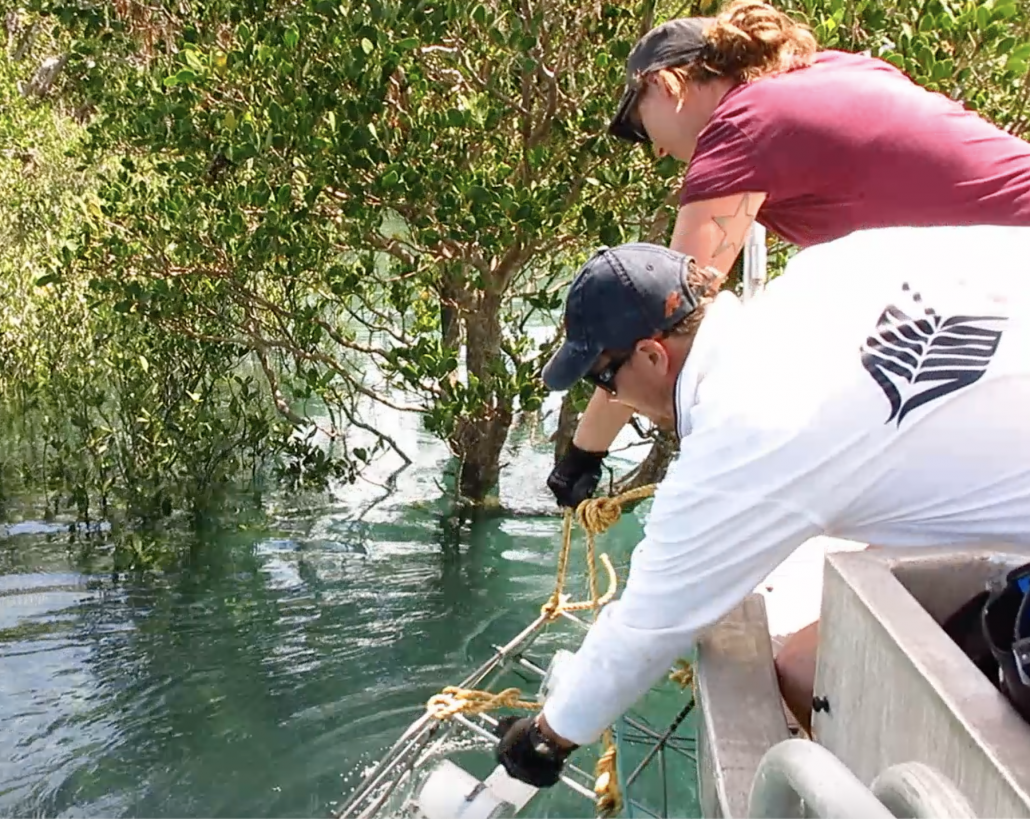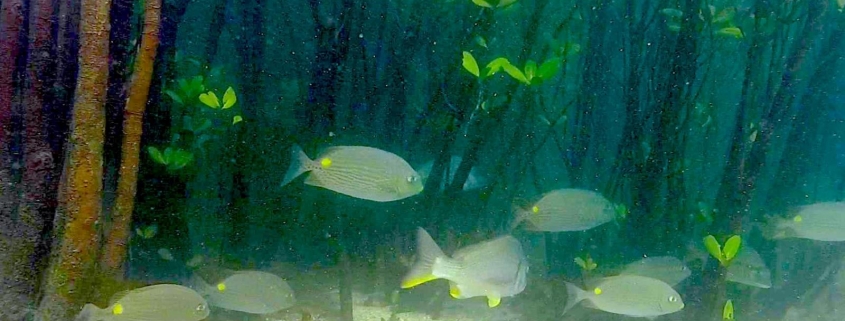To Bait or Not to Bait: Remote Underwater Video Surveys of Juvenile Fish
A new study comparing the efficiency of baited and unbaited remote underwater stereo-video to survey juvenile fish populations has found no significant difference between the two methods.
Juvenile fish are a particularly important group to monitor and understand given the high social, economic, and ecological value placed on adult fish populations.
Driven by their need for shelter from predators and environmental stressors, juvenile fish are often found in habitats which are difficult to sample other than by diver surveys. In the Kimberley however, diver surveys are impractical given the dangerous tidal conditions and the presence of crocodiles. Divers surveys have also been linked with a change in fish behaviour.
As part of the Western Australian Marine Science Institution’s (WAMSI) Kimberley Marine Research Program, a team of scientists from The University of Western Australia (UWA), The Australian Institute of Marine Science (AIMS) and the Kimberley Marine Research Station compared the use of baited and unbaited remote underwater stereo video systems (BRUVS and RUVS). The study took place in the Iwany (Sunday) Islands group with guidance from the Bardi Jawi Rangers and Traditional Owners.
Stereo-RUVS use two cameras on a frame that is lowered onto the seabed to record fish movement. The two cameras enable lengths and distance measurements to be made using specialised software.
Lead author UWA PhD candidate Camilla Piggott said the results, published in the Journal of Experimental Marine Biology and Ecology suggest both methods can effectively produce the same result.
‘’What we found was that there was no difference in the ability of stereo-BRUV or stereo-RUV to quantify the relative total abundance, species richness, or assemblage composition of juvenile fish,” Camilla said.
Sixty Stereo-RUVs and 60 Stereo-BRUVs samples were taken across four shallow-water (1-6 metre) coral, mangrove, macroalgae, and seagrass habitats to contrast the effect of the presence or absence of bait, deployment period, in-water visibility and tidally driven water speed.
“We found that a deployment period of 10 minutes for Stereo-BRUVs and 15 minutes for Stereo-RUVs was optimum for sampling the juvenile fish assemblage across all four contrasting habitats,” Camilla explained. “Since no statistical significance was observed between 10 and 15 minutes, we recommend that Stereo-RUVs deployed for 15 minutes during tidal slack water conditions are an optimum way to provide consistent results for comparisons of juvenile fish assemblages across the habitats studied in this region.”

Dr James Gilmour and Camilla Piggott deploy a Remote Underwater Video System at the Iwany (Sunday) Island group in the western Kimberley (Photo: AIMS)
Citation: Piggott CVH, Depczynski M, Gagliano M, Langlois TJ (2020) Remote video methods for studying juvenile fish populations in challenging environments. Journal of Experimental Marine Biology and Ecology, doi.org/10.1016/j.jembe.2020.151454
The $30 million Kimberley Marine Research Program was funded through major investment supported by $12 million from the Western Australian government co-invested by the WAMSI partners and supported by the Traditional Owners of the Kimberley.

